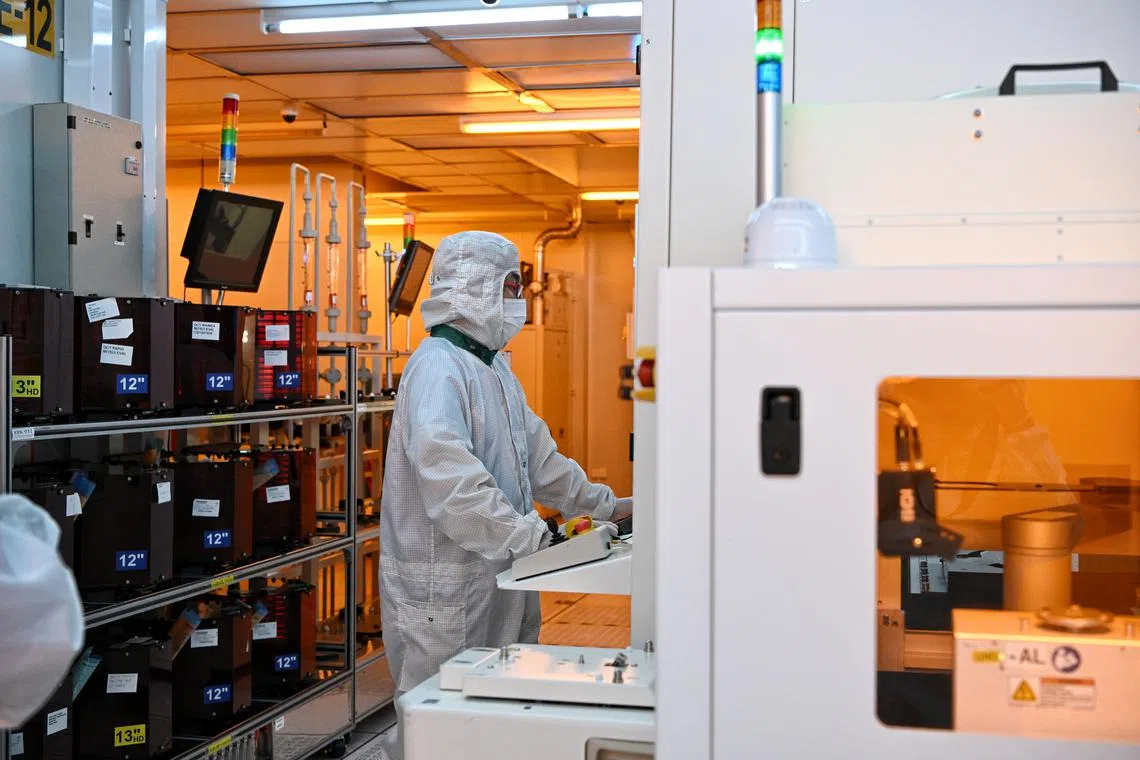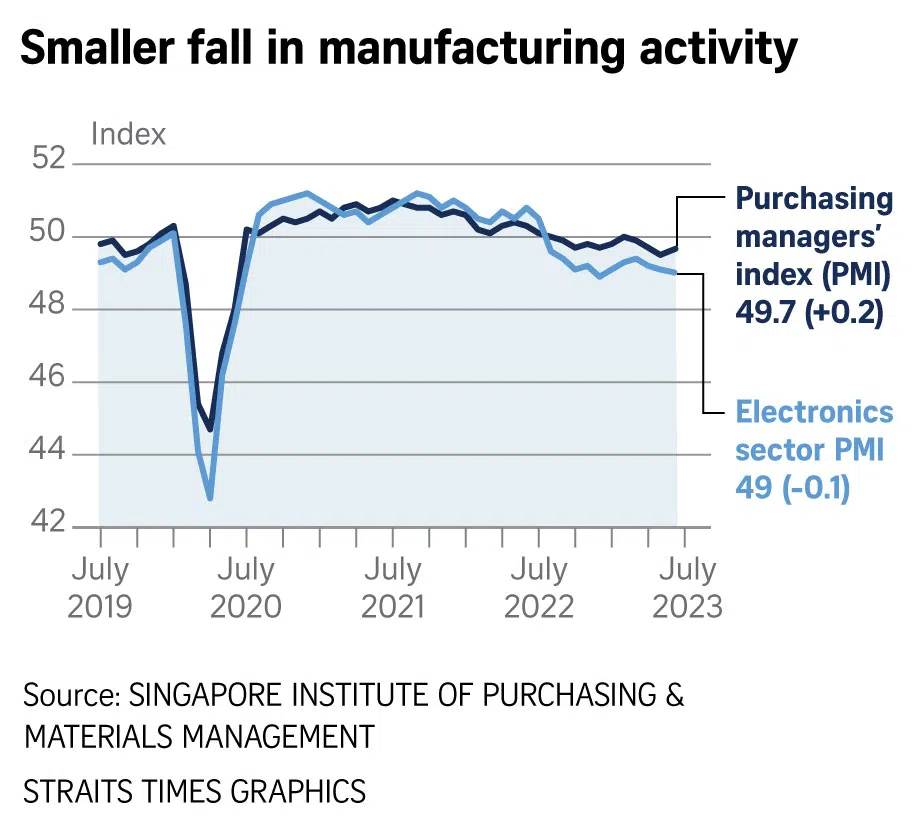Decline in S’pore factory activity slows in June, but electronics sector continues to weaken
Sign up now: Get ST's newsletters delivered to your inbox

Singapore’s purchasing managers’ index rose marginally to 49.7 points in June, up from 49.5 points in the previous month.
ST PHOTO: KUA CHEE SIONG
Follow topic:
SINGAPORE - Factory activity in Singapore continued to decline, albeit by a smaller degree amid the malaise across the broader region, but the weaker growth outlook for electronics may be raising the likelihood of a technical recession
Singapore’s purchasing managers’ index (PMI), a barometer of the manufacturing sector, rose marginally to 49.7 points in June, up from 49.5 points in the previous month.
But the electronics PMI edged lower to 49 points, from 49.1 a month earlier.
Readings below 50 indicate contraction, whereas those above 50 points denote growth.
OCBC chief economist Selena Ling said the June data showed “a stabilisation rather than a broad-based rebound”.
Maybank economist Brian Lee agreed, adding that the softer contraction compared with May was a welcome relief after three consecutive months of deterioration. However, he felt that it may be too early to call this a turning point.
DBS Bank economist Chua Han Teng added that the data had to show sustained improvement over the next few months before “we can be sure if the manufacturing sector had bottomed, or if better days ahead were expected”.
A similar picture unfolded across other exporting areas in the region, including China, South Korea, Taiwan, Malaysia and Vietnam. PMI readings for June remained in contraction territory, which Mr Lee characterised as bleak.
For Singapore, the smaller fall in the overall PMI was due to similarly slower contractions for new orders, new exports and factory output. But this was dragged down by steeper drops in inventory, employment, and a first-time fall in supplier deliveries.
Notably, imports posted a steeper contraction while input prices climbed higher, even after having risen for a 35th month.
Overall, manufacturing continued to sour in June due to weak global demand, said Mr Lee.
Looking ahead for the second half of 2023, “local manufacturers were bracing (themselves) for a dour outlook”, said Singapore Institute of Purchasing and Materials Management (SIPMM) executive director Stephen Poh.
Ms Ling said that even with a pickup in activity in the other sectors, such as transport engineering and the biomedical cluster, it may not be sufficient to lift industrial production from its current slump.
A turnaround in manufacturing would hinge on the health of the electronics segment, which makes up some 40 per cent of factory output. A prolonged slump in electronics, on the other hand, could prove detrimental.
Ms Ling also noted that this was the 11th straight month of contraction for electronics, which is nearing the previous 14-month downturn that lasted till December 2019.
“This retreat reinforced the global semiconductor industry’s doldrums amid a softening demand outlook,” she said.
Semiconductor demand was being hit not only by a persistent slump in global demand for electronics products downstream, but also by United States chip restrictions on China
Other near-term issues facing the electronics segment include high interest rates, as well as the destocking of high inventories, despite the optimism for artificial intelligence-related chips, said Mr Chua.
Ms Ling said the only silver lining was that the electronics order backlog has returned to expansion zone after two continuous months of contraction. This may be a sign that the worst is over and that external demand was likely to stabilise or possibly even improve, she added.
However, she admitted that other global headwinds were still formidable.
“Barring the usual Chinese playbook of more aggressive and broad-based policy stimulus, the domestic demand story in China is likely to remain subpar in the interim, and could stymie the regional production networks if geopolitical tensions persist, especially in the name of ‘de-risking’ by the US administration”, she said.
Both Mr Lee and Ms Ling said the risk of a technical recession still looms, citing the weak industrial production data in the past two months.



